#H. Charles McBarron
Photo

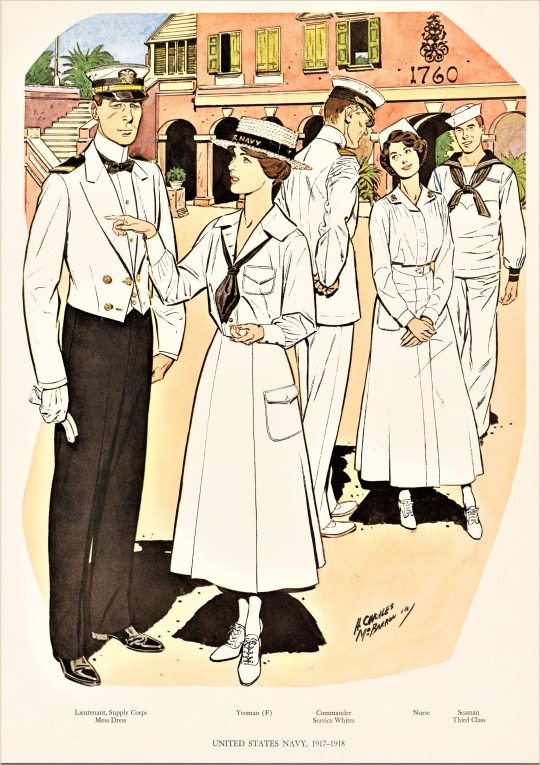
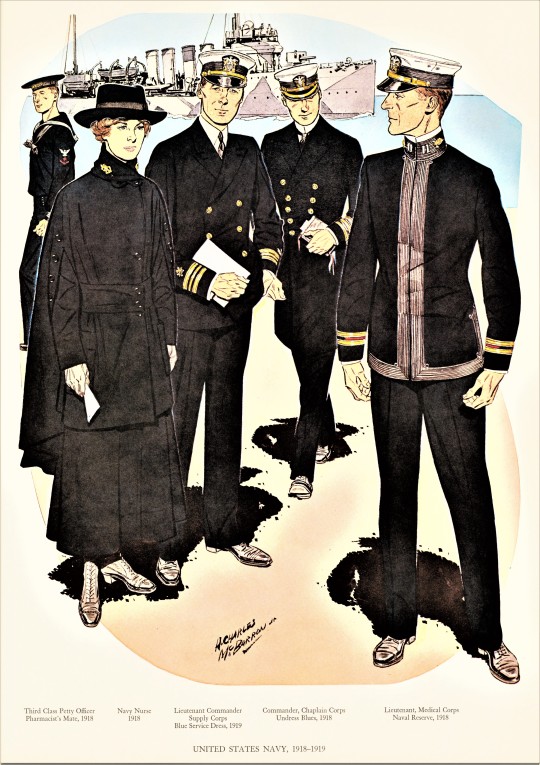


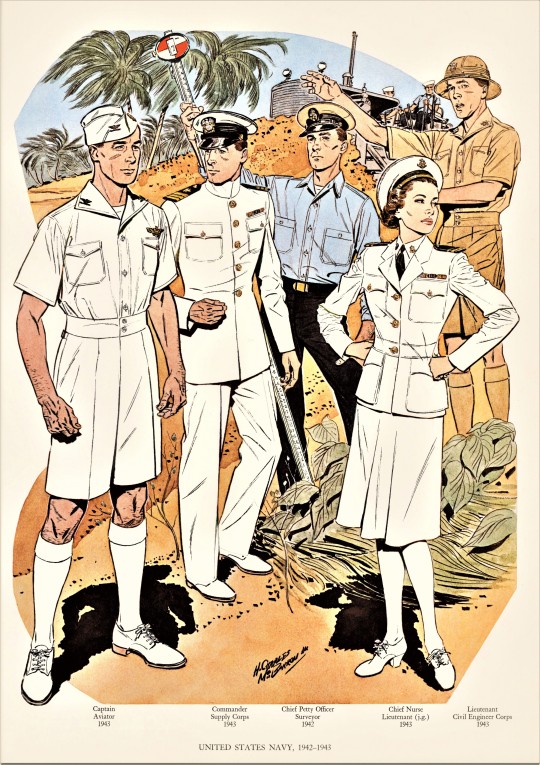
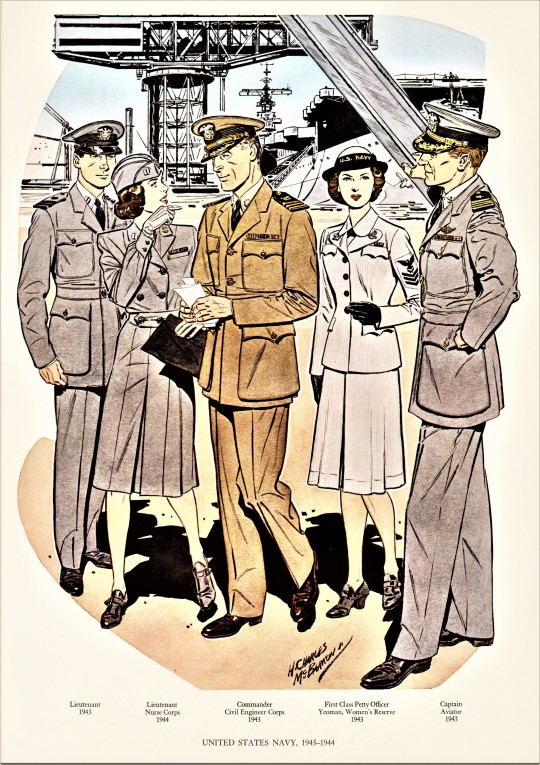


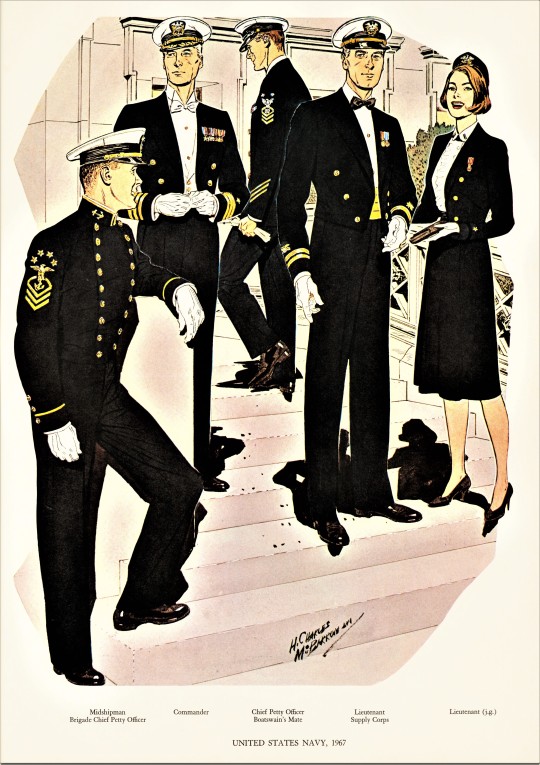
A Veteran's Day Fashion Friday
We commemorate Fashion Friday Veteran’s Day with a few plates of U.S. Navy uniforms from WWI and Armistice Day (the original Veteran’s Day) to 1967, the date of the publication of the plates in the portfolio set Uniforms of the United States Navy 1900-1967 published in 1967 by the Naval History Division of the U.S. Office of the Chief of Naval Operations. The portfolio consists of 12 large color lithographs created by noted military illustrator H. Charles McBarron, showing the intricate details that went into each iteration of the Navy uniform.
Included with the plates is a detailed text describing each uniform by U.S. Naval historian James C. Tily. Each text breaks down the particularities and differences of the uniforms for different ranks of the time, including Captains, Lieutenants, Midshipmen, and more.
View another post from this set.
View more Veteran’s Day posts.
View more Fashion Friday posts.
#Veteran's Day#holidays#Fashion Friday#military uniforms#naval uniforms#U. S. Navy#Uniforms of the United States Navy 1900-1967#Uniforms of the United States Navy#H. Charles McBarron#James C. Tily
104 notes
·
View notes
Text

Royal Navy undressed Uniforms from 1812, Captain, Midshipman, Rear Admiral and Lieutenant, by H. Charles McBarron, mid 20th century
49 notes
·
View notes
Text
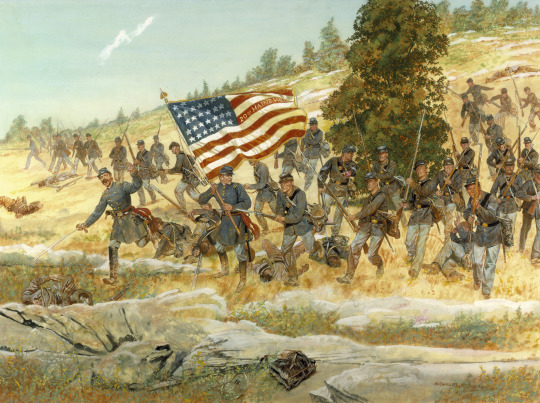
"The Twentieth Maine" by H. Charles McBarron.
The 20TH Maine being nearly out of ammunition and desperate to hold the flank of the Union forces was ordered by COL Chamberlain to charge the Confederate forces with fixed bayonets. With Chamberlain in the lead, the bayonet charge down Little Round Top was so unexpected and violent that it successfully pushed the Confederate forces back and destroyed the attack on the vulnerable Union flank. 2 July 1863.
23 notes
·
View notes
Text

Battle of Monmouth June 28, 1778, by H. Charles McBarron from Soldiers of the American Revolution. Center of Military History. This is one of the many battles in the North that William Hull participated in. George Washington would write, “Major Hull was appointed by me, at the intercession of several officers in the Massachusetts state line. He is an officer of great merit, and whose services have been honorable to himself and profitable to his country. He might have been arranged in the Connecticut line, but many of the Massachusetts officers discovered great uneasiness at the idea of his being taken from them, and he himself generously refused the offer. I mention this as a trait of his character.”
0 notes
Text

THE AMERICAN SOLDIER, 1814, General and Staff Officers, Rifle Regimental Officer. Riflemen in Summer Uniform. Northern Frontier.
I've just discovered the American military artist H. (Hugh) Charles McBarron Jr. (1902-1992), who was commissioned by the US government to produce several series of paintings depicting historical American soldiers and sailors. He was renowned for his attention to detail, knowledge of clothing, and commitment to historical accuracy.
It must be the last trait that makes him depict an authentic Napoleonic/1810s style of form-fitting, body-conscious uniforms. (Too bad 1970s standards of American modesty are too delicate for a real Captain Gilbert Heathcote or Lord Uxbridge).

An 1815 uniform plate from THE AMERICAN SOLDIER, Uniforms of the United States Army 1775-1975. I love how he shows the production of uniforms with tailors in civilian dress.
#war of 1812#uniforms#us army#military history#1810s#napoleonic#the american soldier#dressed to kill#illustration#art#historical fashion#men's historical fashion#hugh charles mcbarron#h charles mcbarron jr#i am definitely looking up his books
74 notes
·
View notes
Photo
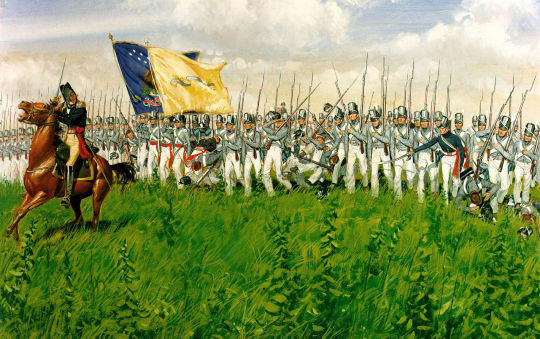
5 JULY 1814- BATTLE OF CHIPPEWA - #Warof1812 #Armyhistory #USArmyMany historians maintain that the Battle of Chippewa was the only occasion during the War of 1812 when equal bodies of regular troops met face to face in extended lines of battle on an open plain in broad daylight, without advantage of position. It is significant that an army of American regulars was never again beaten by British troops. Paintings, They are Regulars by God by H Charles McBarron JR/
Although not a large-scale battle, the American victory gave the United States Army a character and pride it had never before possessed.After an American advance from Plattsburg, New York, led by Major General James Wilkinson, was checked just north of the border in March 1814, Major General Jacob Brown led 3,500 American troops across the Niagara River on 3 July to seize Fort Erie in a coordinated attack with U.S. Navy Commodore Isaac Chauncey's fleet, in a move designed to wrest control of Lake Ontario from the British. In subsequent troop maneuvers in the Niagara region, Brigadier General Winfield Scott's brigade of 1,300 men, part of Brown's command, while they were preparing for drill, was unexpectedly confronted by a large British force advancing from across the Chippewa River to attack on 5 July. While the brigade of American militia and U.S. allied Indians commanded by Brigadier General Peter Porter advanced to clear the adjacent woods of Canadian militia and British allied Indians and irregulars, Scott's brigade advanced to engage a like number of British regulars in an open fight. Scott's well-trained troops broke the enemy line with a skillfully executed charge, sending the survivors into a hasty retreat. British losses were 137 killed and 304 wounded; American, 48 killed and 227 wounded. ALSO SEEhttp://www.history.army.mil//html/books/074/74-6/index.html https://www.nps.gov/articles/battle-of-chippawa.htm http://www.westpoint.edu/history/SitePages/War%20of%201812.aspxLikeCommentShare
1 note
·
View note
Photo

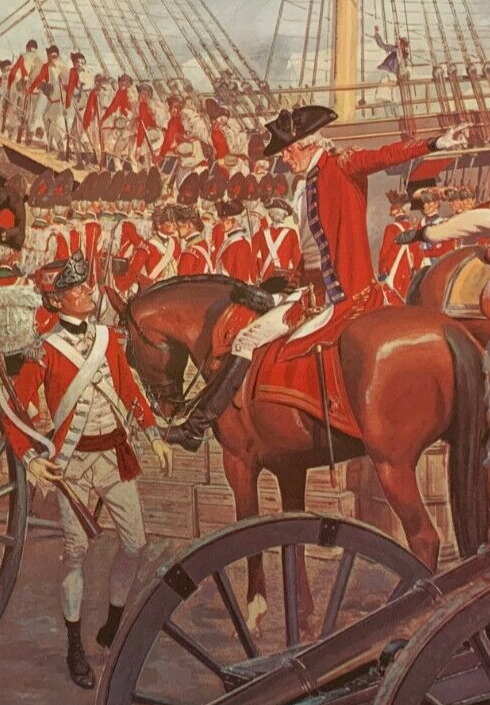


The British evacuation of Boston, 1776, featuring regular infantry, grenadiers, light infantry, marines, general officers, the Royal Artillery and the Royal Navy. By H Charles McBarron Jr.
#history#military history#boston#evacuation day#18th century#american revolution#revwar#american war of independence#redcoat#redcoats
94 notes
·
View notes
Photo
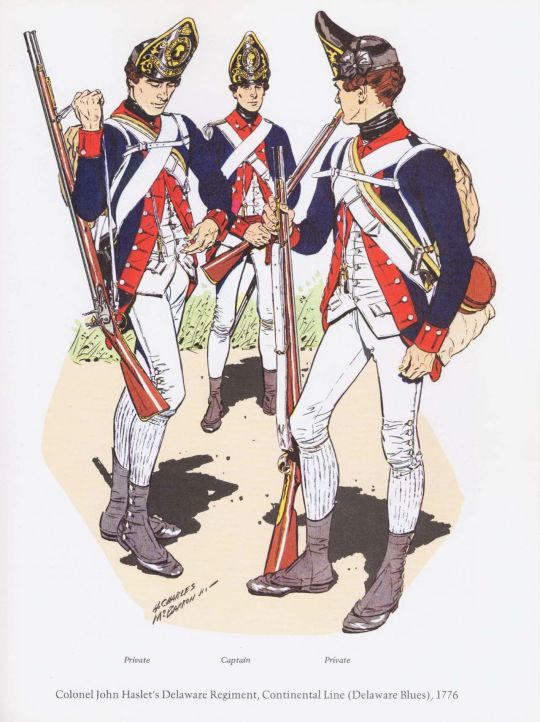
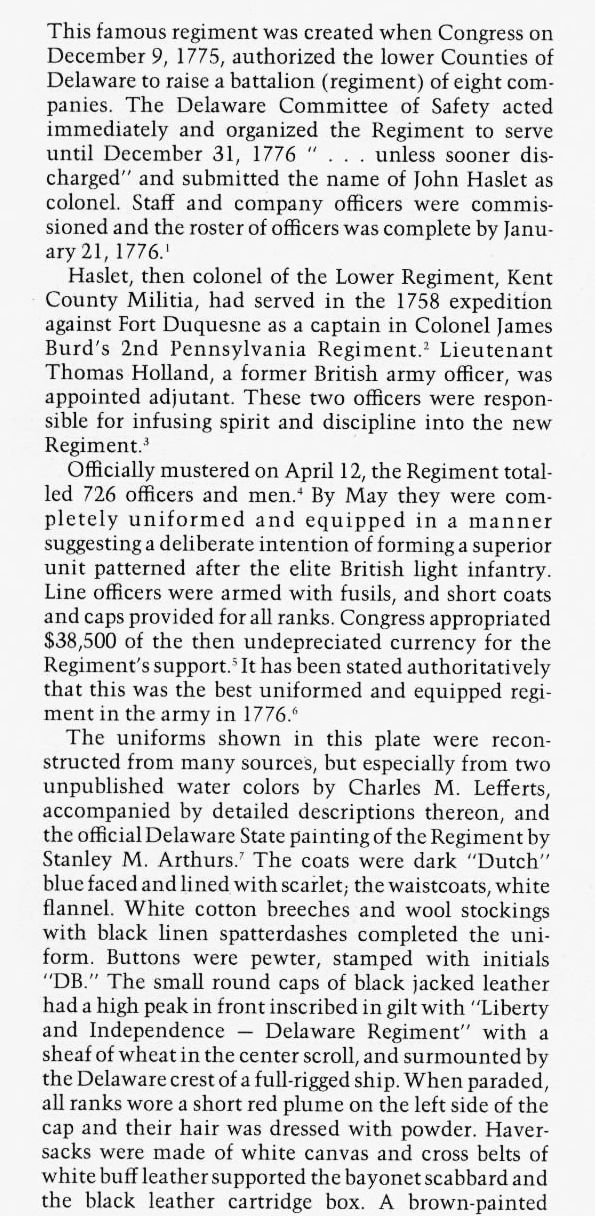

Colonel’s John Haslet’s Delaware regiment, Continental Line, 1776, USA, artist - H. Charles McBarron, Jr., text by James P. Simpson
47 notes
·
View notes
Photo
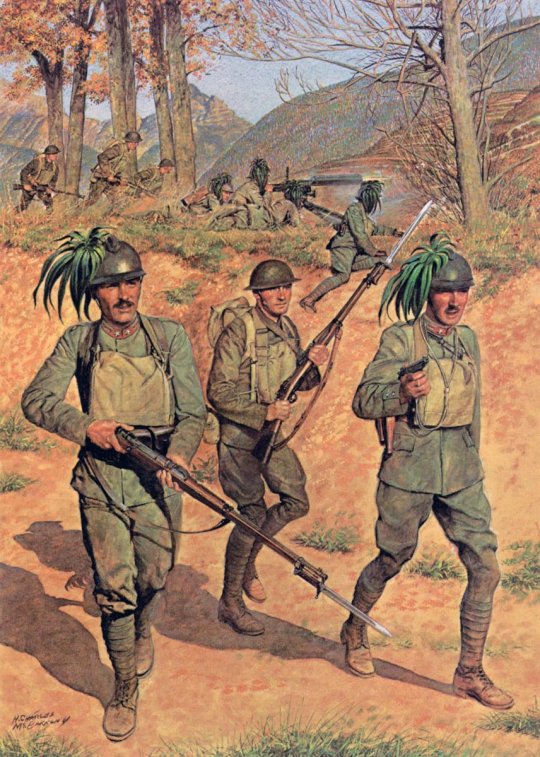
Battle of Vittorio Veneto starts #OTD Oct 24 1918 until the Austro-Hungarian Empire is knocked out of #WWI Nov 4 1918. H. Charles McBarron paints this scene of Italian Bersaglieri and US 332nd Infantry Regiment soldiers training together on #ItalianFront.
Shown in the painting are U.S. Army and Italian Bersaglieri troops as they train in preparation for combat with the Austrians. The soldiers of the 332d Infantry Regiment are armed with the M1903 Springfield rifle and M1905 bayonet and are attired in the standard US Army uniform and equipment of the period. The Bersaglieri are wearing the standard 1909 grey green uniform with steel grey helmets and cockerel feathers and carrying a pistol and a M1891 6.5mm Mannlicher-Carcano rifle and bayonet at the ready.
42 notes
·
View notes
Photo

“First at Vicksburg” by Charles H. McBarron.
Confederate Lines, Vicksburg, Mississippi, 19 May 1863. In this assault against bitter resistance the 1st Battalion, 13th Infantry lost forty-three percent of its men, but of the attacking force, it alone fought its color up the steep slope to the top. General Sherman called its performance "unequaled in the Army" and authorized the 13th Infantry to inscribe "First at Vicksburg" on its color. Although it took two more months of hard fighting to capture Vicksburg and split the Confederacy, no episode illustrates better the indomitable spirit of Americans on both sides.
#american civil war#historical painting#civil war#vicksburg#charles mcbarron#this is a great painting...not too many for vicksburg sadly#but i really like this one
6 notes
·
View notes
Photo
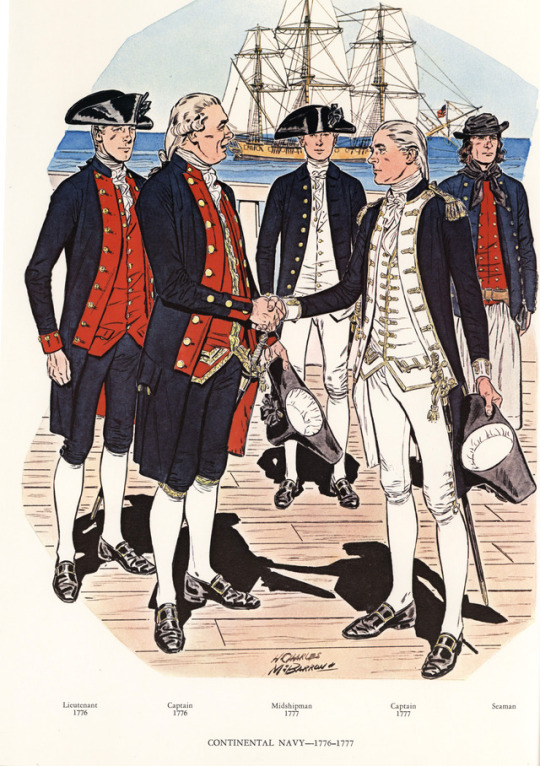





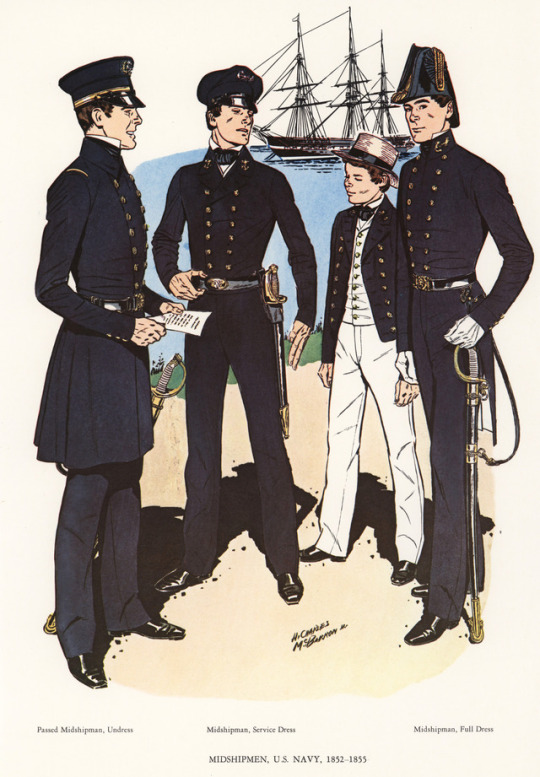
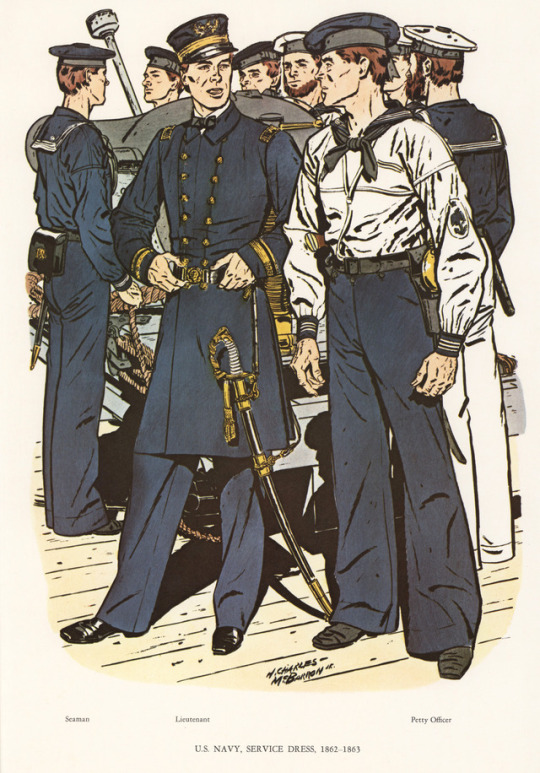
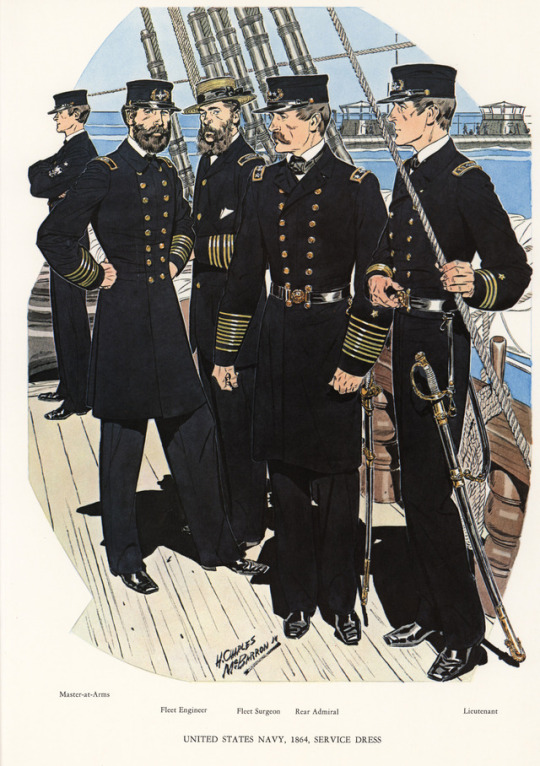

Fashion Friday
This week’s Fashion Friday post focuses on the many uniforms of the U.S. Navy between 1776 and 1898. This collection of prints titled Uniforms of the United States Navy 1776-1898 and published in 1966 by the United States Department of the Navy consists of 12 large color lithographs. Each lithograph, created by noted military illustrator H. Charles McBarron from pre-existing sketches, shows the intricate details that went into each iteration of the Navy uniform. When viewing the uniform designs chronologically there is a clear evolution from one iteration to the next with various aspects of the garb remaining similar but not exactly the same.
Included with the lithographs is a detailed text which describes each uniform. Each text breaks down the particularities and differences of the uniforms for different ranks of the time, including Captains, Lieutenants, Midshipmen, and more. These detailed accompanying texts were written by the United States Department of the Navy under the close supervision of an expert in U.S. Naval history Captain James C. Tily (which is also just a great name for a ship captain).
-Alex, Graduate Intern (Lead)
#fashion#Fashion Friday#us navy#navy#uniform#captain#Alex#lithographs#Captain James C. Tily#H. Charles McBarron
119 notes
·
View notes
Text

US Navy Medical Officers, 1830-1841, by H. Charles McBarron 1960
From left to right, a surgeon in 1834 special undress uniform, a surgeon in 1830 full dress uniform, an assistant surgeon in 1830 undress uniform, and an assistant surgeon in 1832 full dress uniform.
144 notes
·
View notes
Photo

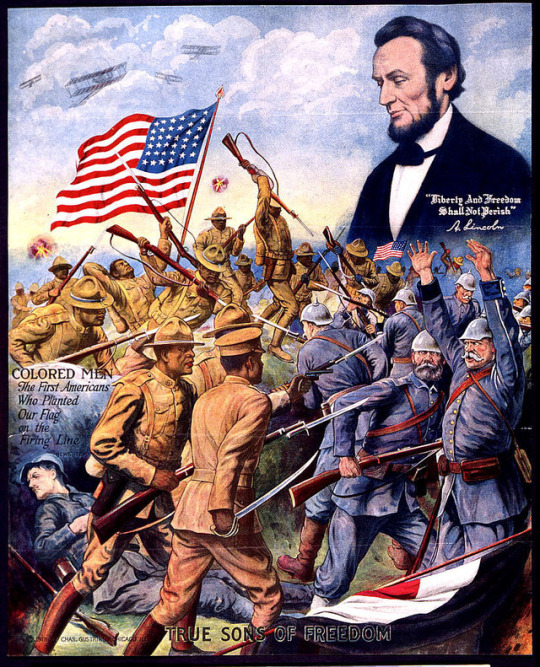
HellFighters from Harlem by H. Charles, McBarron.
The only U.S. unit to get "over there" with their old State name was the 15th New York. These black National Guardsmen soon found themselves with a new name, the 369th Infantry Regiment, and later as part of the French Army's 161st Division, participated in the Meuse-Argonne offensive. On September 29, a regimental historian would later remember, "the day dawned clear and cool. There was expectancy in the air." A fierce artillery barrage preceded the attack by the 369th, nicknamed "Hell Fighters" by the enemy. After a brutal struggle during which heavy casualties were sustained Sechault was taken and the 369th dug in to consolidate their advance position. The action depicted earned the Croix de Guerre for the entire regiment. But the Meuse-Argonne claimed nearly one-third of these black fighters men as battle casualties. This distinguished National Guard regiments left its proud mark on the AEF (American Expeditionary Force) as "the regiment that never lost a man captured, a trench or a foot of ground..."
True Sons of Freedom, by Charles Gustrine dates from 1918.
Poster of the all-black 369th Regiment fighting German soldiers during the World War I.
110 notes
·
View notes
Text
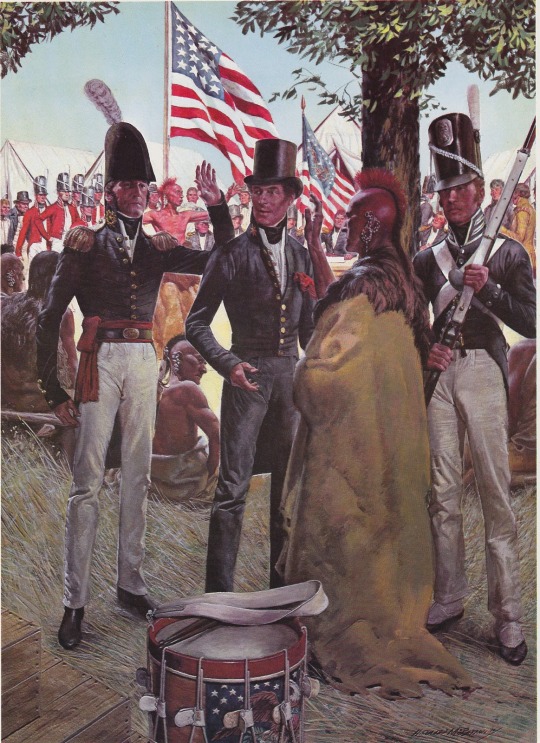
A piece by H. Charles McBarron Jr. titled THE AMERICAN SOLDIER, 1819: Engineer Officer, U.S. Explorer, Infantryman, Infantry Bandsmen, Indian Commissioners.
This was made in the 1960s-1970s, but what I really love about it is how much it echoes an 1819 painting of Independence Day Celebration in Centre Square, Philadelphia, by John Lewis Krimmel.

Tell me that McBarron wasn't referencing War of 1812 Boyfriends, at centre:
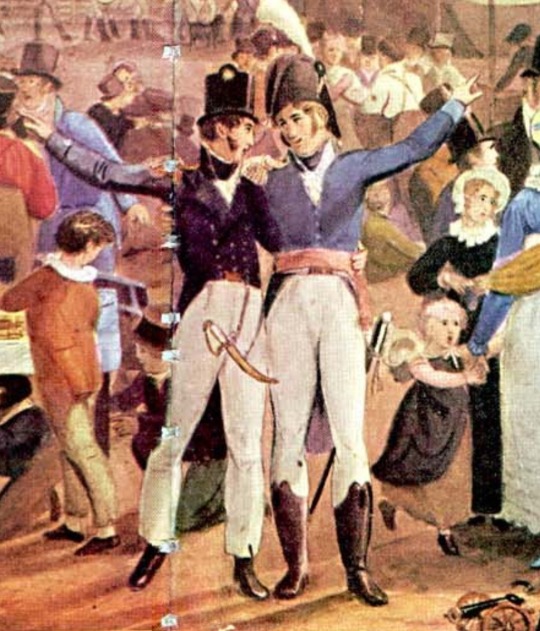
#h charles mcbarron jr#military history#uniforms#us army#us history#john lewis krimmel#1810s#1819#dressed to kill#mcbarron gives every man a period-appropriate cinched waist look#and i love him for it#the american soldier#historical men's fashion#i want to pretend it's the same guys in both paintings#why did we as a society move away from cool hats
45 notes
·
View notes
Photo
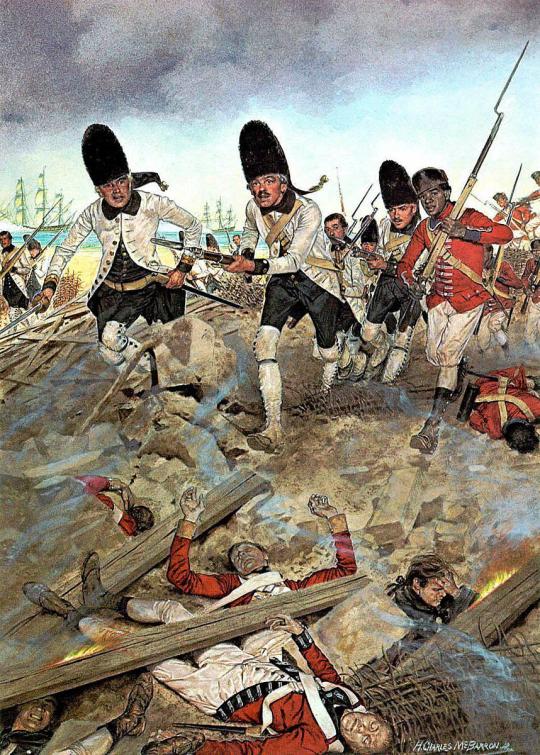
Spanish troops at Pensacola 1781. Spanish troops of the Louisiana Regiment (white coats) and the Company of Free Blacks of Havana (in red coats) can be seen storming Ft. George, which concluded the Spanish campaign against British forces along much of the Gulf Coast. By H. Charles McBarron, Jr. posted by Reddit User: Paul-Belgium Visit artofreddit.com for more art #battlepaintings
1 note
·
View note
Photo

U.S. Marines storming Chapultepec outside Mexico City, September 13, 1847 by H. Charles McBarron.
66 notes
·
View notes